Autumn was in the air. It was that special kind of weather, which is hard to put in words but which you’ll recognize once it’s there – very bright and sunny but chilly at the same time with a subtle breeze of crisp air, telling you that summer is over. On a morning just like that, chance had it that I found out about the annual Tofino carving festival named “Carving on the Edge”. Squinting into the sun and sipping on a coffee outside my favorite café, I discovered a small article about the festival happening that same day. As a photographer, I was instantly hooked as I know that traditional arts and crafts can make for brilliant pictures. Apart from that, it seemed like a unique chance to learn more about the culture of the people who have been calling the Canadian West Coast their home for thousands of years.
The Tofino Carving Festival – Carving on the Edge
The tranquil seaside town of Tofino, located on the West Coast of Vancouver Island, was and still is an important hub for the Tla-o-qui-aht First Nations, one of the many Canadian indigenous groups. With its long First Nations history, the Tofino region is home to many skilled artists. They are masters of their trade and are dedicated to preserving the art of wood carving. Every year in September, when the sun is low, heralding the arrival of autumn, the annual Carving on the Edge Festival gives these master carvers a stage for their rich cultural heritage and a chance for others to find more about the art. The local carvers are joined by other indigenous artists from all over the island, making it a unique mix of styles, techniques and people.
Documenting history and heritage
As I entered the venue, the beautiful Shore Pier building down at the Tofino docks, I was greeted by a creative and very vibrant atmosphere. It was not only an exhibition but the artists where all actually working on their next pieces. The airy and bright location left space to wonder around and observe the masters at work. The great thing was that all of them were very approachable, happily answering questions by curious bystanders – just like me.
- Master Carver Kevin Cranmer of the Namgis with his totem pole
- Creating a minitiature canoe
- Masl closeup and moon sculpture in the back
- A local Tofino carver
- Traditional masks on display
Famous Masters of their Trade
I got to talk to Robin Rorick, an artist of the Haida First Nations from far up North. He was working on an amazing cedar panel symbolizing the face of a black bear. Totally immersed in his work, I was able to snap a good picture of him in action. Afterwards he told me that the work that was commissioned to him and will overall take him about a month to finish will be sold for an incredible amount of 8,000 Dollars.
Carving isn’t necessarily an art practiced in solitude but can also be dynamic teamwork. That was proven by Vancouver Island artists Gordon Dick and Kelly Robinson who carved a 12ft cedar panel from start to finish. The panel titled “Teaching Foresight” featured a contemporary design and represents the artist’s early memories and teachings from his late grandfather. “I am concerned about the health of our fish and our oceans and I want to put these ideas, feelings and traditions into this work of art”, Gordon Dick said, who also owns his own gallery.
Probably most representative for the art of traditional carving in and around Tofino is the Martin family. Brothers Joe and Carl Martin, both master carvers of the local Tla-o-qui-aht First Nations, have been carving since their youth and finished over 60 canoes in their careers. Their canoes and other pieces of art can be found in museums and cultural displays throughout Canada and Europe. They have also been the subjects of many documentaries and articles about Vancouver Island’s West Coast region. Joe Martin has traveled all over the world to present his art and educate people on the history and culture of his people. However, the biggest surprise was to get approached by him in almost fluent German. As it turned out, Joe had visited my former home town several times and even has his work on display in the city’s museum of natural history. How small the world can be these days …
- An unfinished canoe by master carver Joe Martin as greeting outside the venue
- Wood chips are a sign of progress here
- Carl Martin Jr. with his work
- Carl Martin going at it – hollowing a soon to be finished mask
- Carl Martin Jr. at work on another one
A Colorful Presentation of First Nations Culture
Carving is only one aspect of the rich First Nations culture. The performing arts and especially traditional dancing is another. Dancing played a vital role in the everyday lives of the different tribes and was used for welcoming others, storytelling, ceremonial purposes and passing on ancient myths and beliefs. The colorful and intricate dresses of the dancers, their graceful and yet figurative movement, accompanied by the rhythmic sounds of drums and expressive chanting – all of that makes for a fascinating and powerful expression of an age-old culture. The festival provided a small glimpse of that during its evening dance performance.
Led by their chief Bill Cranmer, a group of the ʼNa̱mǥis First Nation had been invited to attend the festival and perform some of their traditional dances. Chief Cranmer was a tall and wiry man with bright white hair and an utterly energetic aura. One could feel his authority and as he spoke, everyone else turned quiet. After his brief introduction of his people, their history and their dances, the performance began. A welcome dance by the whole group was followed by single dances, each telling a unique story. Stories from ancient times and which had been passed on from one generation to the next. And as the intricately carved wooden masks, displayed during the daytime, played an important part in these dances, it all suddenly came together, seemed connected and made sense.
Last Thoughts …
Coming from Europe and only knowing this fascinating culture from movies, which by the way are from reality, this was an amazing experience. The First Nations of Canada and all of North America have been going through difficult times and still are. But they seem to slowly pick up the pieces and put it all back together. It’s great to see that this rich culture is still alive and that even their young ones actively participate in it. It was just a small glimpse, a scratch on the surface but it was enough to make me want to learn more about it. I once again realized that traveling is not only about adventure, nice landscapes and the next thrill. It’s also about getting to know new cultures, their way of life and learning a bit from it. Having such a unique experience in a country like Canada came as a little surprise and made it all even more worthwhile.
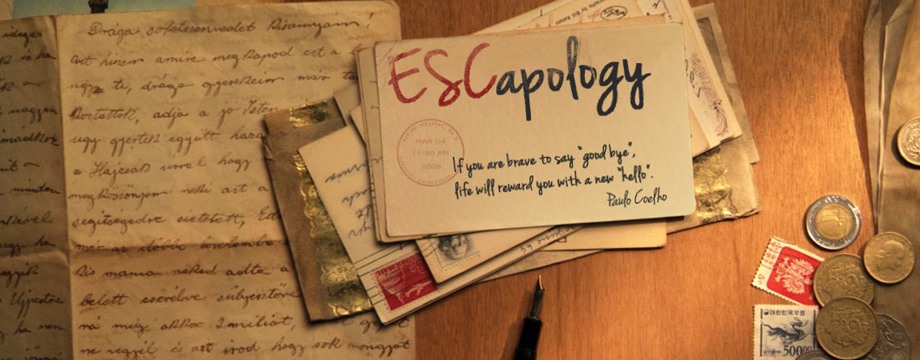
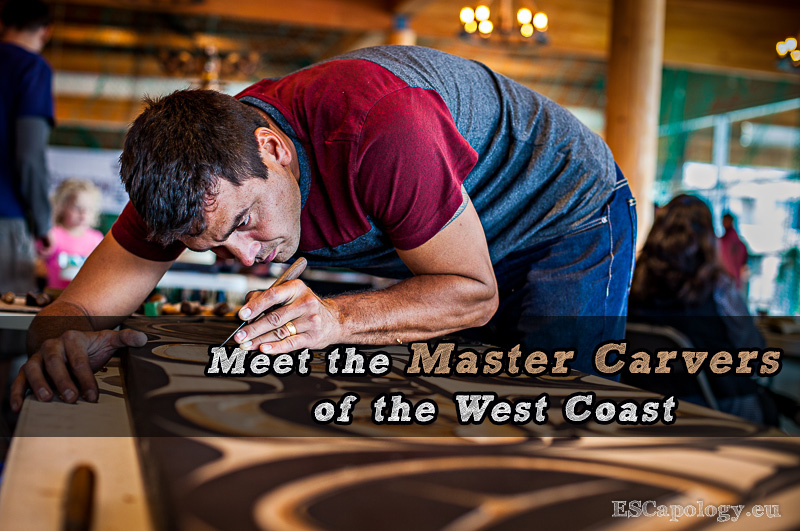
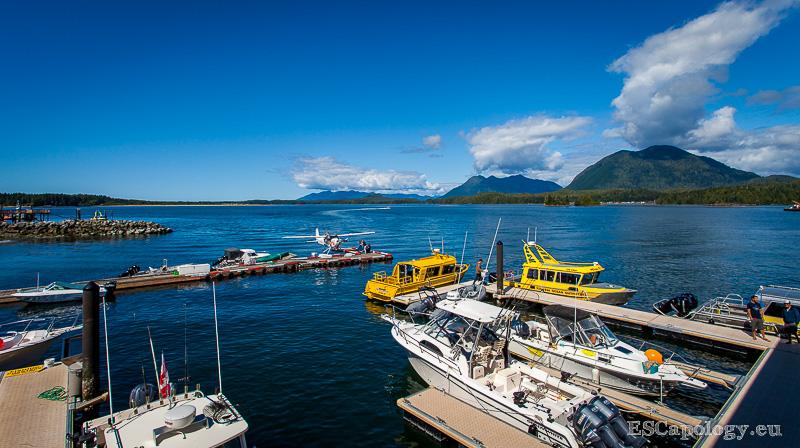
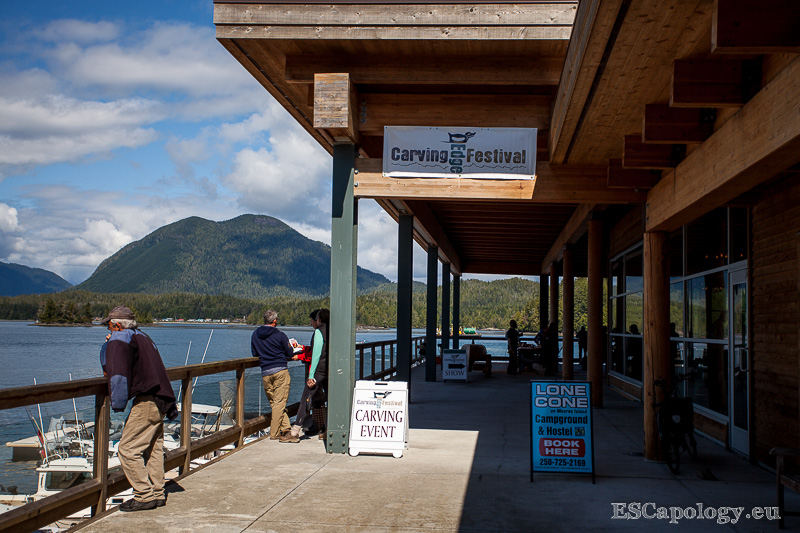
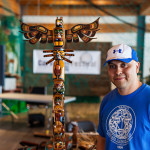
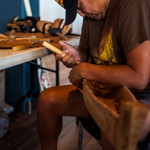
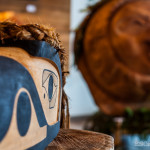

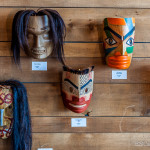
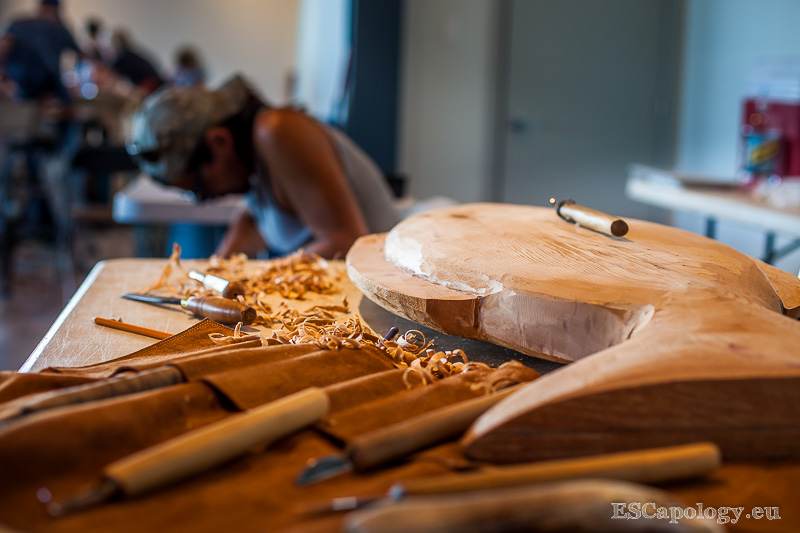
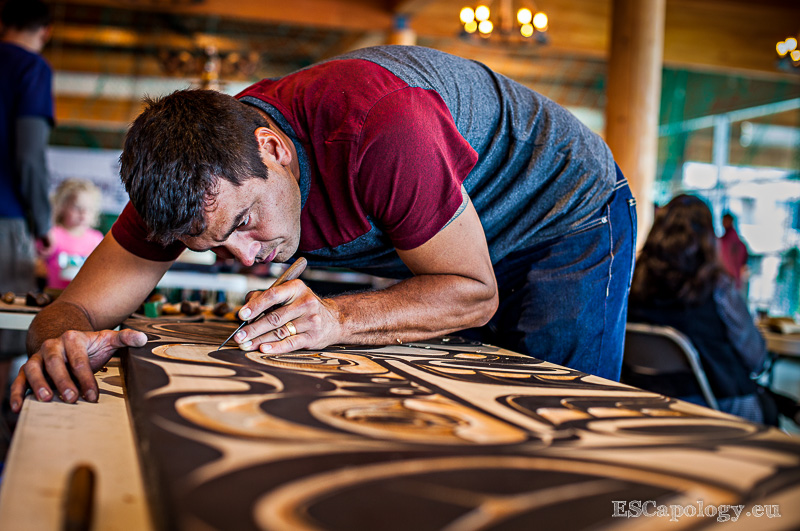
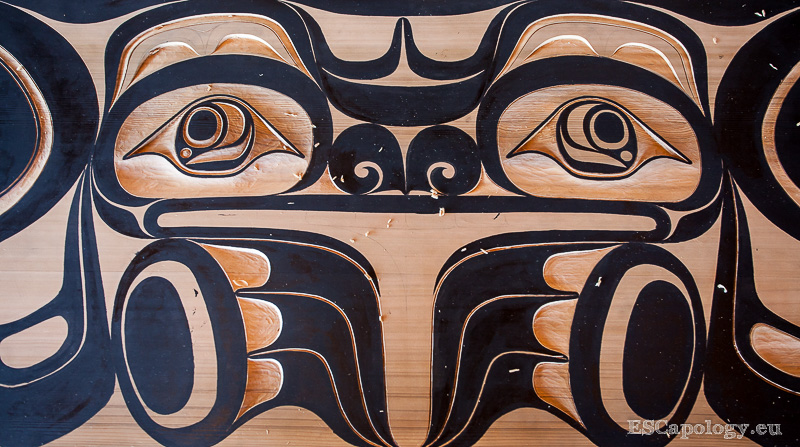

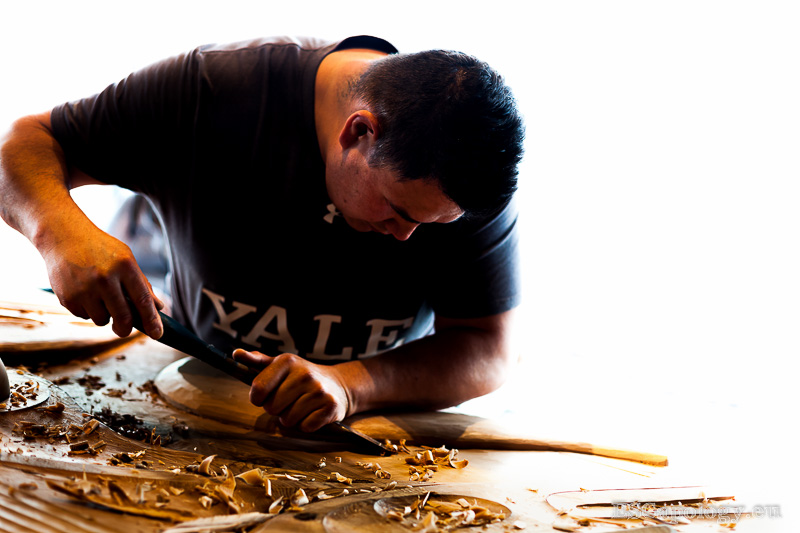
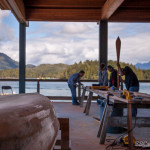
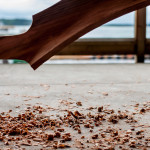
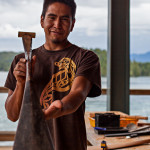
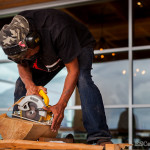
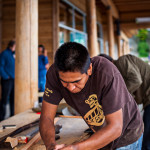
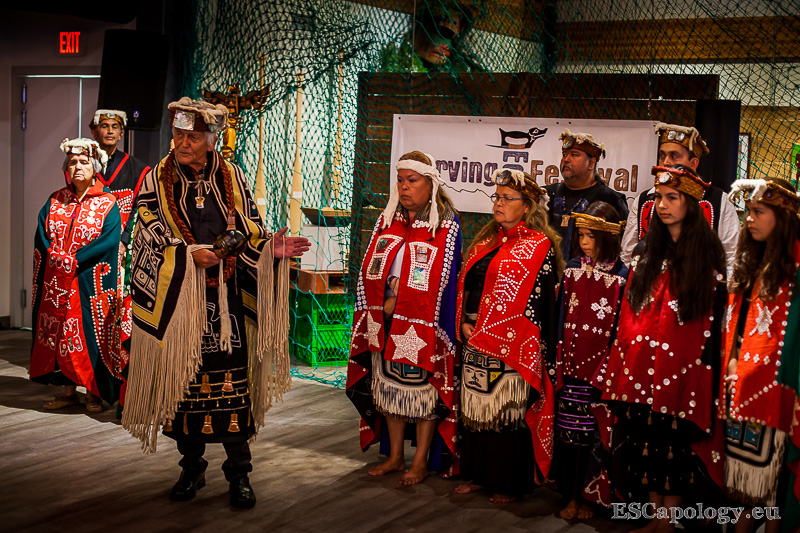
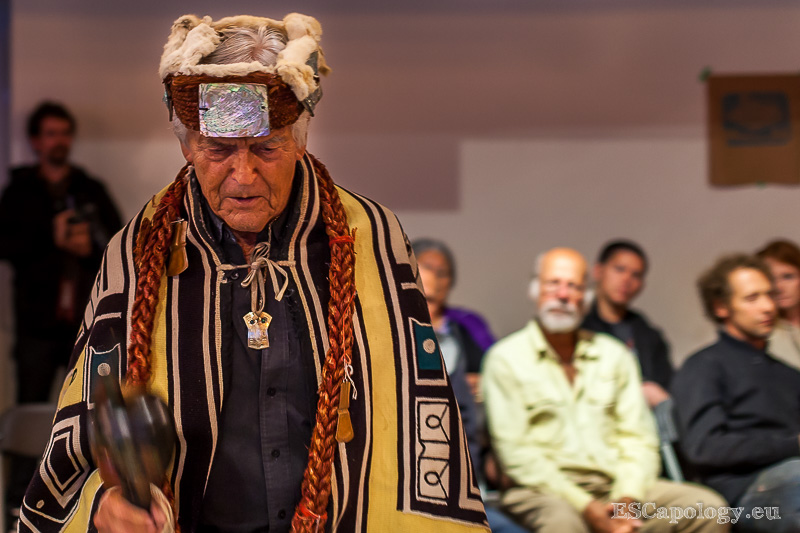
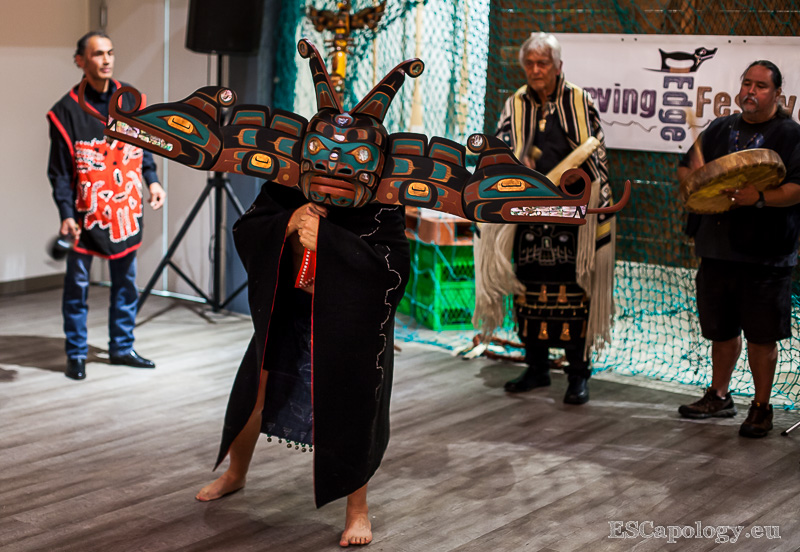











That’s great that you got to experience even a Lil bit of their culture. Such vibrant photos especially of the artwork. Do u know if its ink or paint for the black bear face carving? I loved all the totem poles that I seen there. I yet to experience the powwow…also, the native traditional clothing has always been admirable to me with the intricate beading and rich colors.
Hi April, thanks for the comment. Glad you liked the photos. I am actually not quite sure if the black color is ink or paint. I know that they char the wood for the paddles. That gives them a distinctive black color. But I would think these panels are done differently. It is for sure a very interesting culture which I enjoyed learning more about. I will see if I get the chance to find out even more ….. Take care and thanks again for stopping by.
Philipp
Welcome and thanks for replying. I tried to google about the color…seems it can be both ink and/or paint. Will try to see if a friend of mine who is part Native American knows as well. And yes, definitely if you can learn more about their culture, go for it. Truly interesting and rich culture…many names are even of First Nations (as referred in Canada it seems). The street I live at is of a Native American tribe 🙂 and plenty others that we may not realized derived from their culture. Hope you are well. Have a great week!
April
Hi April, yeah it is very interesting…not so easy to understand sometimes. Cool to hear that there also traces of this culture around your area..maybe interesting to find out more about that as well …. Have a goof week!
Hi Phil
Nice!!heheeh i thought you’re the one dancing.. heheh i forgot you’re taller than him. Great post!hmm its good to see the other side of tofino. Mr. Rorick’s work is amazing:) Hmm i wonder if long it took him to finish it?hmm anyway.. great pics as always! love the Traditional Mask pics:)
Stay Magiting!
Berns
Hi there, glad you liked the article. I think Mr. Rorick takes 1 month to finish tat piece from start to finish. It is very detailed and intricate. I don’t know if I would have the patience to do such kind of work..really admirable. What’s Magiting?
Magiting – courageous/brave/fearless
oh, and yeah it takes passion, hard work and tons of patience to do that, haha and that wooden mask used by Mr. Cramner must be really heavy.. i dont think could dance (well im not really a good dancer haha) and balance that wooden mask all at the same time.
Great post Philipp!! I haven’t been to Tofino in some years, so it’s great to read about it here as well as see your wonderful photos. The First Nations art and artists are amazing and it’s so fabulous that you were able to experience and share that. I especially love the photo of Robin completely focused on his work. I think most people rarely get to see the actual process of creating art rather than simply viewing the finished work – and for me, that is where the magic really is. The whole west coast of Canada is such a beautiful place to explore and experience. Thanks for sharing!!
Hi Dale, thanks for stopping by. I am happy you liked my little report and the images, I am reallyfascinated by their art and also their general culture. Part of the festival was the traditional dance as well as a film screening where the director, a native woman from Haida Gwai, was present to explain a bit more and answer questions. Really fascinating. And yeah, the art is great …. what the create from a random piece of wood is just crazy. I could never do that haha. Are you also from Canada Dale?
Hi Philipp. Yes, I loved your report and photos!! Please keep them coming. I am indeed originally from Canada, although I haven’t lived there in a long time. I’ve been living nomadically the past 2+ years, but recently stopped for the winter with my girlfriend who is part Native American (Cherokee and Choctaw) to prepare for a marathon 1,500 mile kayak trip we’re undertaking next summer. Not sure if you managed to get there, but I took a 2 week sailing trip to Haida Gwai a few years ago and it was incredible. Would love to go back there one of these days soon. Tofino holds a special place in my heart as the first job I had after graduating high school. I worked on a fishing boat based there for a short time. I would love to see that film from the native Haida Gwai filmmaker too. Do you know if it is available online somewhere?
I love this article. Thanks for sharing. Now it makes me want to read more about north american culture (particularly their natives), including the Indians. And whoa, those carved out works of art just slams me with shame! Awesome 🙂
Hi Esabela, thanks for your comment and kind feedback. That is awesome to hear. It was sure a nice experience and a spontaeous find… Thanks so much for stopping by …. Philipp
wow, I love the pictures in this post. So lively and colorful.
Hey thanks Pete, I really appreciate it. Glad you like em
I love this article and pictures in this post